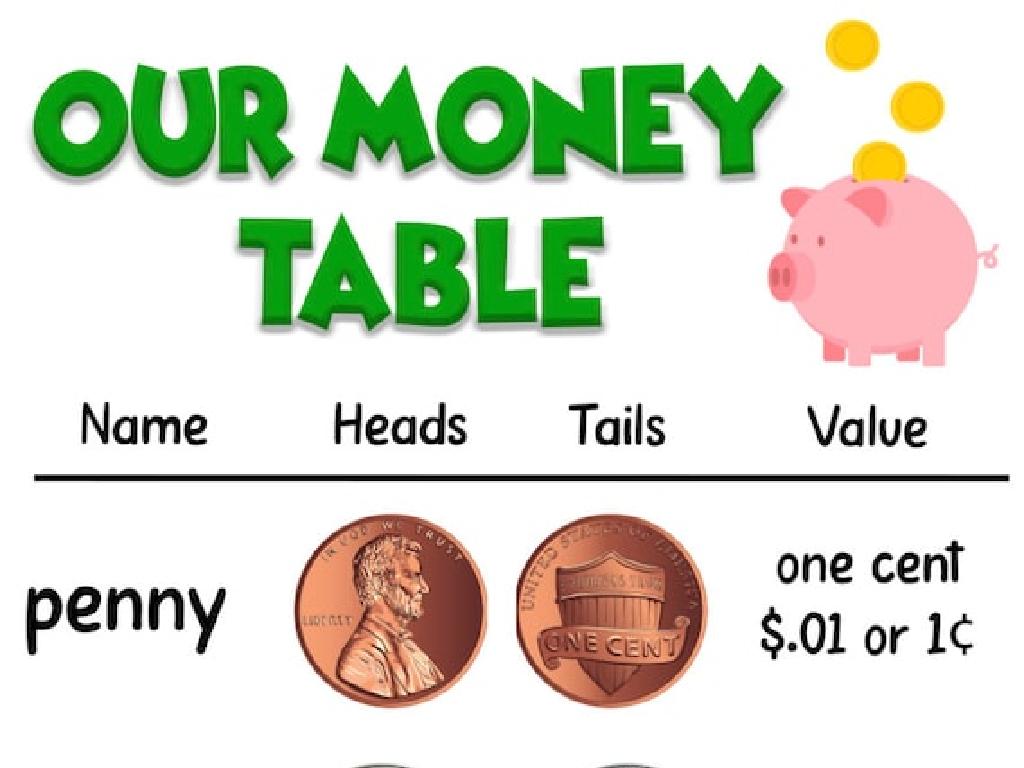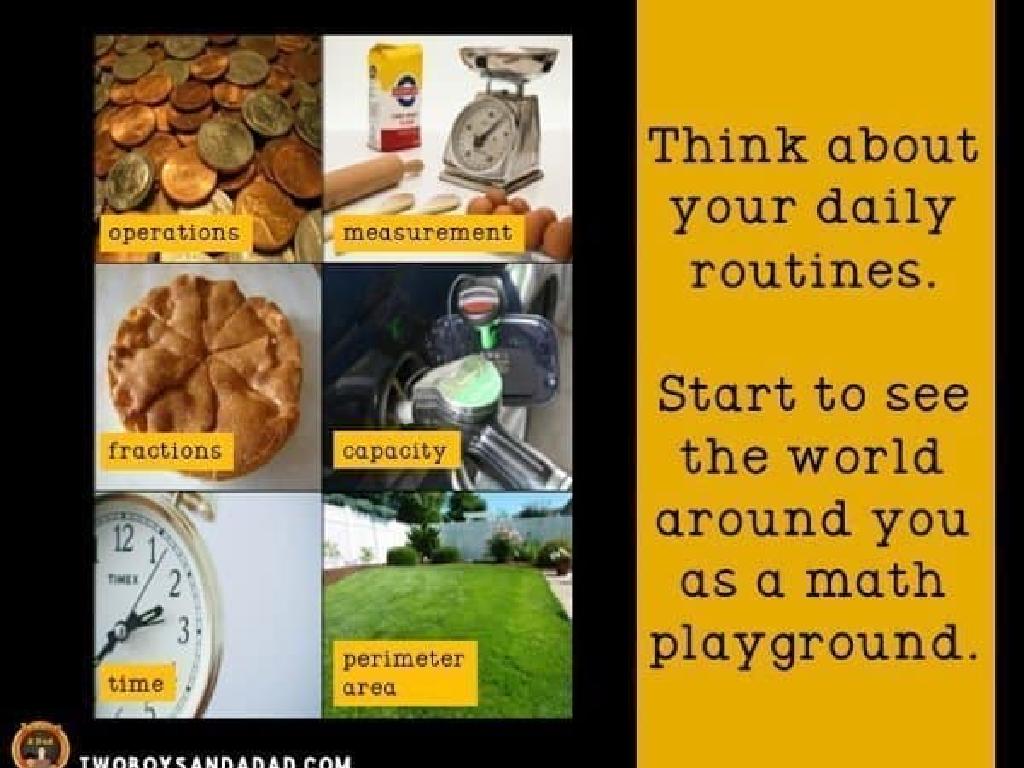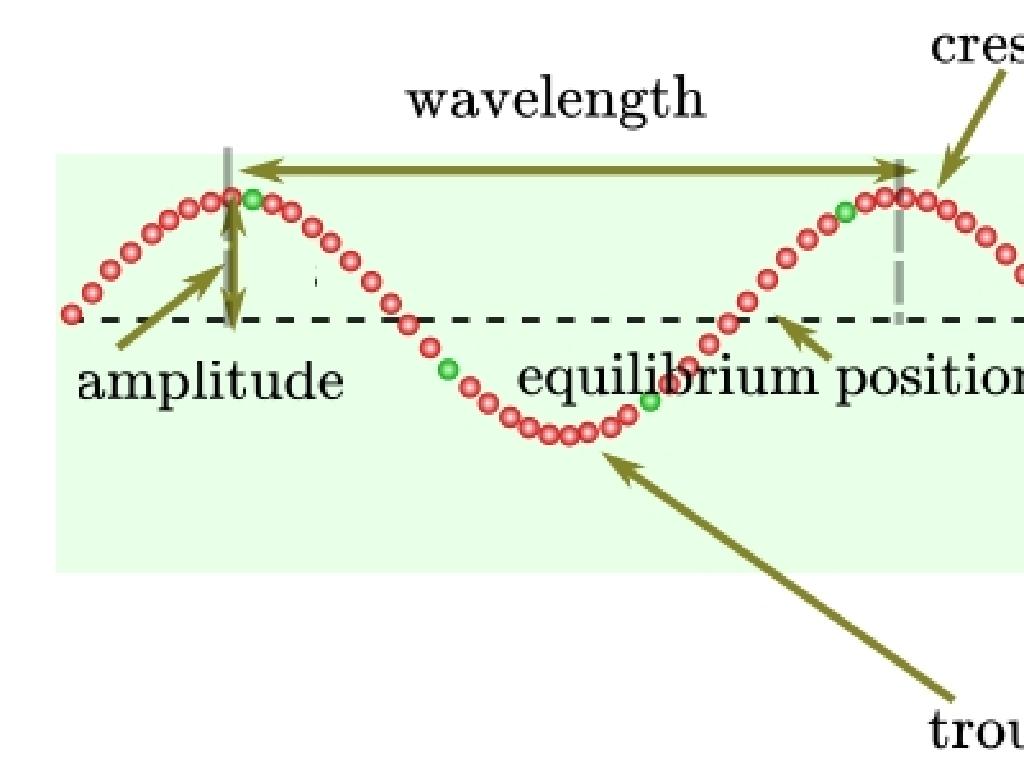Add And Subtract Positive And Negative Fractions
Subject: Math
Grade: Seventh grade
Topic: Operations With Rational Numbers
Please LOG IN to download the presentation. Access is available to registered users only.
View More Content
Introduction to Rational Numbers
– Define rational numbers
– Numbers that can be expressed as a fraction a/b, where a and b are integers and b is not zero.
– Explore positive & negative fractions
– Fractions can be above (positive) or below (negative) zero, like 3/4 or -2/5.
– Real-life rational number examples
– Examples: money owed (-$20.75), baking (3/4 cup sugar), temperature (-5°C/23°F).
– Adding & subtracting fractions
– Use common denominators to add/subtract; account for signs.
|
This slide introduces students to rational numbers, focusing on understanding both positive and negative fractions. Rational numbers include all numbers that can be written as a fraction, which is a key concept for students to grasp. Real-life examples, such as owing money or measuring ingredients, help students relate to the material. Emphasize the importance of the sign of a fraction and how it affects addition and subtraction. Provide strategies for finding common denominators and combining fractions with different signs. Encourage students to practice with examples and to consider how these operations apply to real-world scenarios.
Recap: Fractions and Operations
– Review of fraction basics
– Fractions represent parts of a whole; numerator/denominator format
– Adding fractions with same denominators
– Simply add the numerators, keep the denominator the same
– Subtracting same denominator fractions
– Keep the denominator, subtract the numerators
– Introduction to unlike denominators
– Learn to find a common denominator before adding or subtracting
|
This slide is aimed at refreshing students’ memory on the fundamental concepts of fractions before delving into more complex operations. Start by reviewing what fractions are and how they are written. Emphasize the ease of adding and subtracting fractions with the same denominator by combining numerators. Then, introduce the concept of unlike denominators, setting the stage for learning how to find a common denominator, which is a crucial step in adding and subtracting fractions with different denominators. Provide examples for each case and encourage students to solve a few problems to reinforce their understanding.
Understanding Signs in Fractions
– Meaning of positive and negative signs
– Positive sign means more than zero, negative means less
– Rules for adding and subtracting
– Same signs add, different signs subtract
– Examples with positive and negative
– 3/5 + (-2/5) = 1/5; -3/4 – (-1/4) = -2/4
– Practice combining signs
|
This slide introduces students to the concept of positive and negative signs in the context of adding and subtracting fractions. Begin by explaining that positive numbers represent quantities greater than zero, while negative numbers represent quantities less than zero. Discuss the rules for combining positive and negative numbers: when signs are the same, add the numbers; when signs are different, subtract the smaller from the larger and keep the sign of the larger number. Provide clear examples to illustrate these rules, using fractions. Encourage students to practice with additional examples and to consider the real-world applications of combining positive and negative fractions, such as in financial contexts (debts and credits) or temperature changes.
Adding Positive and Negative Fractions
– Find a common denominator
– Common denominator: a shared multiple of the denominators
– Add fractions with same signs
– Same signs: Add numerators, keep the sign
– Add fractions with different signs
– Different signs: Subtract numerators, keep the sign of the larger number
– Simplify the resulting fraction
– Reduce the fraction to its simplest form
|
This slide introduces the process of adding fractions with both positive and negative signs, which is a key concept in understanding operations with rational numbers. Start by explaining the necessity of finding a common denominator, which allows the fractions to be combined. Emphasize that when the fractions have the same sign, you simply add the numerators. However, when they have different signs, treat the operation as a subtraction problem, keeping the sign of the larger numerator. After combining the fractions, guide students through simplifying the result by finding the greatest common divisor and dividing both numerator and denominator by it. Provide examples for each case and encourage students to practice with a variety of problems.
Subtracting Positive and Negative Fractions
– Subtract fractions with same sign
– When signs are the same, subtract numerators and keep the sign
– Subtract fractions with different signs
– If signs differ, subtract smaller from larger and take the sign of the larger
– Use addition of the opposite
– Instead of subtracting, add the opposite of the second fraction
– Simplify the final fraction
– Always reduce the fraction to its simplest form
|
This slide aims to teach students the process of subtracting fractions with both positive and negative signs. Start by explaining that when the fractions have the same sign, they subtract normally while keeping the sign of the result. When the fractions have different signs, treat them as a combination of subtraction and addition: subtract the absolute values and assign the sign of the larger absolute value to the result. Emphasize the use of the addition of the opposite as a strategy to simplify the process. Finally, remind students of the importance of simplifying their answer to its lowest terms. Provide examples for each case and encourage students to practice with exercises.
Adding & Subtracting Fractions: Practice
– Add mixed fractions with different signs
– Example: 3 1/2 + (-2 3/4) = ?
– Subtract negative fractions
– Example: (-5/6) – (-1/2) = ?
– Step-by-step class walkthrough
– Interactive problem-solving
|
This slide is dedicated to practicing the addition and subtraction of fractions with positive and negative signs. Start with an example of adding mixed fractions with different signs, ensuring to explain the process of finding a common denominator and combining whole numbers and fractional parts separately. Then, move on to subtracting negative fractions, highlighting the rule that subtracting a negative is the same as adding a positive. Work through these problems as a class, encouraging students to participate in solving the steps. Finally, engage the class with interactive problem-solving, allowing them to attempt similar problems and discuss their solutions. This will help solidify their understanding of the concepts.
Class Activity: Fraction Operations Relay
– Divide into small groups
– Solve addition & subtraction problems
– Each group tackles a unique set of problems involving both positive and negative fractions.
– Present solutions to the class
– Explain the problem-solving process
– Share the steps taken and reasoning behind each solution.
|
This activity is designed to promote teamwork and enhance understanding of adding and subtracting positive and negative fractions. Start by dividing the class into small groups, ensuring a mix of abilities in each. Provide each group with a set of fraction problems that require both addition and subtraction, including examples with different denominators and a mix of positive and negative fractions. After solving the problems, each group will present their solutions to the class, explaining the methods and reasoning used to reach their answers. This will help reinforce the concept for the presenting group and provide an opportunity for peer learning. As a teacher, be prepared to guide discussions, clarify misconceptions, and offer praise. Possible variations of problems include fractions with like and unlike denominators, as well as mixed numbers.
Wrapping Up: Adding & Subtracting Fractions
– Review of fraction operations
– Summarize how to add and subtract positive and negative fractions.
– Homework: Practice Worksheet
– Complete the worksheet to reinforce today’s lesson.
– Compile questions for next class
– Think of any difficulties faced today and write them down.
– Practice makes perfect!
|
As we conclude today’s lesson on adding and subtracting positive and negative fractions, remind students of the key steps involved in these operations. For homework, assign a practice worksheet that includes a variety of problems to ensure they understand the concepts. Encourage students to come prepared with questions for the next class, addressing any challenges they encountered while completing the worksheet. Emphasize the importance of practice in mastering these skills and offer additional support if needed. This will help solidify their understanding and prepare them for more complex operations with rational numbers.






